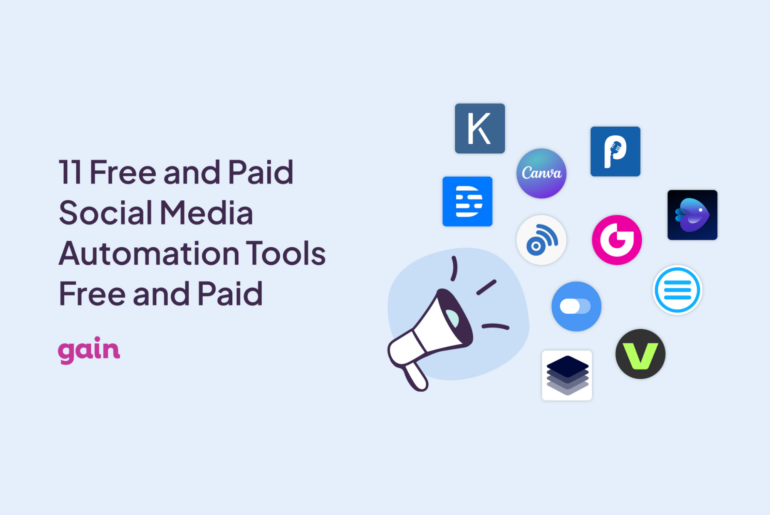Gone are the days of set-it-and-forget-it campaigns.
Marketers now must prove an ROI to have access to larger budgets and to be able to build a more robust team.
Many teams measure the number of marketing qualified leads (MQLs) on a monthly or quarterly basis to assess the success of marketing overall.
Marketing and sales teams that work together often measure conversions in the funnel, sales qualified leads, and sales as well.
These numbers showcase how well content functions to push prospects down the sales funnel.
No matter what other measurements marketers look at, most are at least held accountable for driving MQLs.
So, marketers clearly want to drive these numbers up to showcase success. And in order to increase MQLs, marketers need to figure out which content actually converts prospects.
Enter: content scoring.

What is content scoring?

Content scoring is a relatively new, data-driven method for tracking how each piece of content performs.
Marketers can score content all the way down the sales funnel, but to simplify things, we’re going to discuss scoring content from the first touch to MQLs.
Content scoring relies wholly on the sales funnel. Let’s say there are four touch points between a person discovering the company and becoming an MQL.
- Reads blog post ABC.
- Watching video on homepage.
- Reads blog post XYZ.
- Opens email newsletter ABC.
After those four touchpoints, the prospect, for example, signs up for a demo and becomes an MQL.
Each of touch points played a role in pushing this person down the sales funnel, so each will get a number.
Each MQL has the value of one, which means in equal distribution, each piece of content would be worth 1/4.
However, the first piece of content and the last piece of content are much more valuable.
The first piece of content is what made the prospect notice the company, and the last piece of content was the final push for the prospect to become an MQL.
Therefore, most marketers score the first and last piece of content higher.
Scoring might look something like this:
- Blog post ABC: 0.35
- Video on homepage: 0.15
- Blog post XYZ: 0.15
- Email newsletter ABC: 0.35
Each team scores content differently, perhaps awarding the first and last piece of content an even higher value.
The value of content scoring

Looking at the score of just one MQL does not provide much information; however, adding up the scores of hundreds or thousands of MQLs gives deep insight into content performance.
Marketers can add up content scores on a monthly or quarterly basis to see which are the most valuable, highest converting content pieces.
Furthermore, it’s worth figuring out which content pieces do nothing to convert.
For example, if marketers realize that the homepage video has a low content score, they can then replace the video for a more valuable piece of content.
How to get started
Marketers do not have to try to score each piece of content for each MQL themselves.
Instead, marketers can link up with the sales teams to understand how they score leads and develop a content scoring system alongside the sales process.
Content scoring is an excellent way for marketers to understand which efforts result in success. And since more businesses are asking for a data-driven marketing approach, content scoring is a way to deliver the analytics and insights for a stronger marketing campaign.
Image designed by Freepik

 Content scoring is a relatively new, data-driven method for tracking how each piece of content performs.
Marketers can score content all the way down the sales funnel, but to simplify things, we’re going to discuss scoring content from the first touch to MQLs.
Content scoring relies wholly on the sales funnel. Let’s say there are four touch points between a person discovering the company and becoming an MQL.
Content scoring is a relatively new, data-driven method for tracking how each piece of content performs.
Marketers can score content all the way down the sales funnel, but to simplify things, we’re going to discuss scoring content from the first touch to MQLs.
Content scoring relies wholly on the sales funnel. Let’s say there are four touch points between a person discovering the company and becoming an MQL.
 Looking at the score of just one MQL does not provide much information; however, adding up the scores of hundreds or thousands of MQLs gives deep insight into content performance.
Marketers can add up content scores on a monthly or quarterly basis to see which are the most valuable, highest converting content pieces.
Furthermore, it’s worth figuring out which content pieces do nothing to convert.
For example, if marketers realize that the homepage video has a low content score, they can then replace the video for a more valuable piece of content.
Looking at the score of just one MQL does not provide much information; however, adding up the scores of hundreds or thousands of MQLs gives deep insight into content performance.
Marketers can add up content scores on a monthly or quarterly basis to see which are the most valuable, highest converting content pieces.
Furthermore, it’s worth figuring out which content pieces do nothing to convert.
For example, if marketers realize that the homepage video has a low content score, they can then replace the video for a more valuable piece of content.






